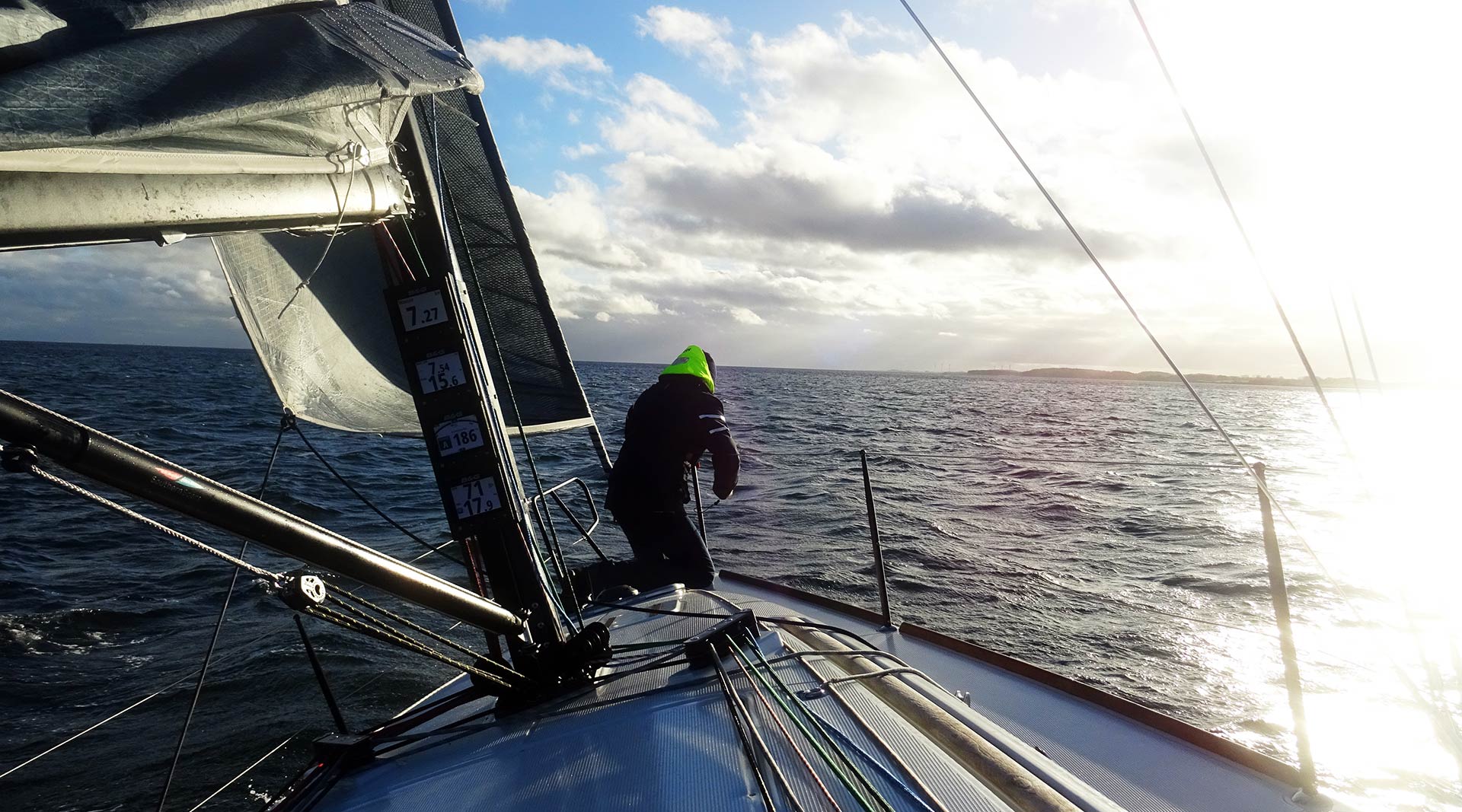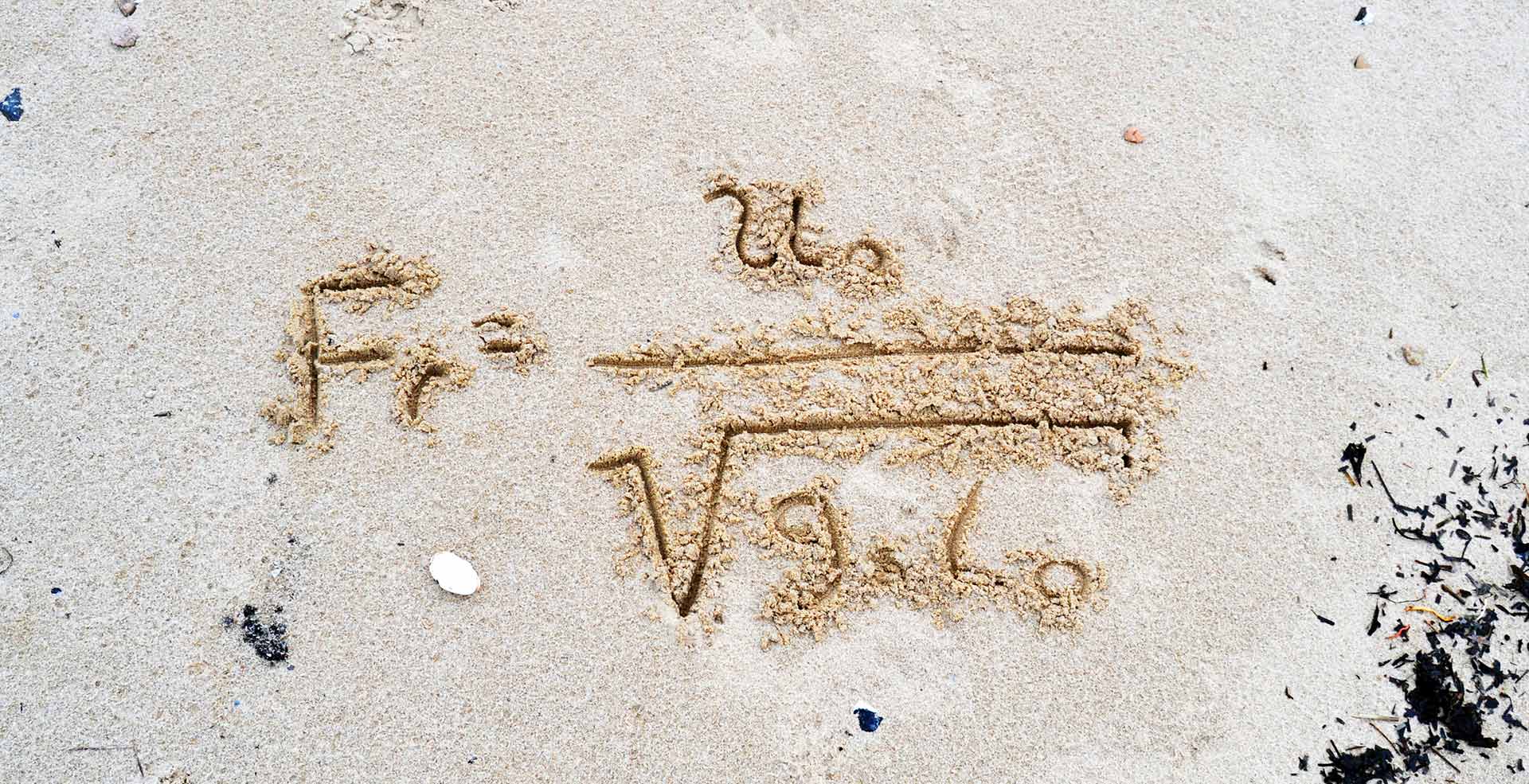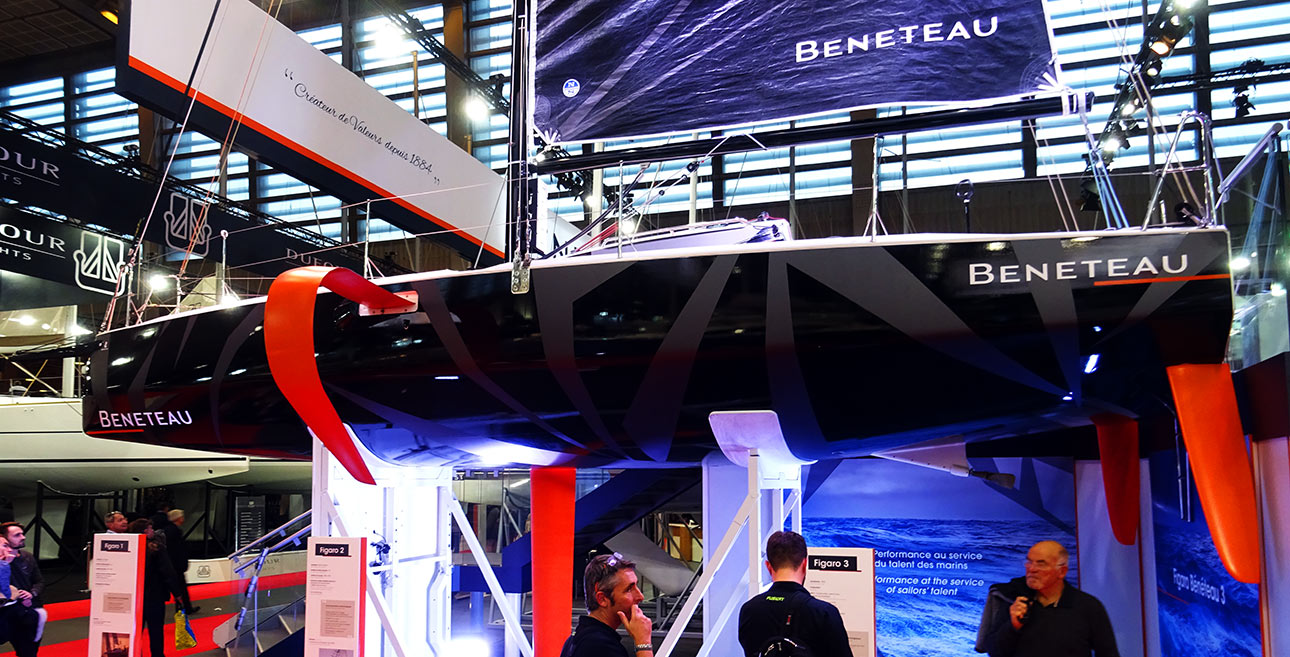“The boat cannot go any faster than this!” shouts my mate as we were underway last summer in a Beneteau First 30 towards the Island of Bornholm (read the articles of this remarkable trip here and here): “The hull speed of this 30 footer is so low …” You know this sentence from other conversations by yourself? But what does “theoretical hull speed” really mean? Let´s make a quick dash into hydrodynamics.

Naval architecture is a fascinating field and if I were fresh and young again (with the experience of life I´ve got now) I would certainly think very seriously of choosing this subject as my favourite course of studies instead of just interviewing the big names of yacht design like German Frers, Javier Soto Acebal or Niels Jeppesen. Back to our topic: What does “hull speed” mean?
Theoretical Hull Speed. Or: A dated view on yacht designs
What my friend back then aboard the small racy Beneteau First 30 wanted to tell me was that the hull speed of this short boat wouldn´t scarcly allow us to sail any faster than some 7 knots. Why? Because any hull going through the water is basically creating two waves: One in front of the boat – the bow wash – and one at the stern – the wake. In between is the trough of course. The faster a boat goes through the water, the bigger apparently the waves get. Until there is one point when the waves are too high and the trough is too deep so the hull is “trapped” in between – and cannot go any faster.

There is a formula to calculate this theoretical hull speed: 1.34 times the square root of the length of the waterline of a hull. In case of our Beneteau First 30 the waterline length is 8.15 metres, so the hull speed is 7.04 knots. A Swan 54 with an LWL of 14.40 metres would be faster – namely 9.22 knots. Sounds logic: A bigger boat with more sail area can develop bigger waves until the trough “entraps” the hull. Thus it can be faster until this point is reached. Though this is indeed a nice short formula to calculate fast underway how fast we could be underway whilst sailing, this equation is a dated approach. In reality and for professional designers it is no longer of importance to contemporary naval architecture. There´s a better one.
A modern approach: The Froude Number or S/L-ratio
The Froude number was developed by its inventor: William Froude, an Englishman of the Nineteenth Century who was a shipbuilding engineer. He developed a formula which is indeed of importance today and is describing possible hull speeds in a better way. In short: The Froude number is a ratio which is looking at the speed and the length of a body flowing through matter. In this matter the Froude number is often also referred to as the speed/length-ratio. The charming fact with this ratio is that you now can compare different shaped hulls with the same S/L-ratio to each other no matter how they are shaped.

The formula is a bit more complicated: Froude or S/L-ratio is the flow velocity divided by the root of the characteristic external field times the characteristic length of a body. Well, this cannot be reckoned fast in one´s head whilst sailing by my mate, but the S/L-ratio is indeed the far more important figure in naval design – and has been like this since Froude uncovered the secret of objects moving through matter in the Nineteenth Century. So, which Froude number does your boat have?
Planing & Foils: Leaving the cosmos of established dogmata
Of course naval architecture is more than just the ratios. In modern day yacht design – as many designers have told me first hand – most of the work is done by a CAD and CFD-animation computer. The least of them is scribbling with pencil on a sheet of paper, at the most a handmade scribble is something the designer presents to a client on a very early stage of a design. The rest is up to the computers which have all the data ready: They will check constantly if a design proposal does produce good numbers. In the era of planning hulls on the other hand seakindliness and the other “classic” properties of a boat´s hull aren´t of utmost importance anymore anyway. With the foils the game of hull design was brought to a whole new direction too.

Nevertheless, in more “classic” yachts like Swan, Hallberg-Rassy, X-Yachts or brands for the “true” blue water cruising like Oyster and alike the long known traditional hull shapes, forms for the appendages and all the other ratios like SA/D-ration (read here about it and of course the class rules or IRC and ORC are still alive and kicking. But isn´t this the exciting thing in yacht design? There´s always a boat for every sailor. For every taste. For every mood. And the Froude number, even the hull speed, is a part of it for sure.
By the way, my King´s Cruiser 33 has a hull speed of 6.86 knots. Oh, boy …
You may also like to read about naval architecture:
The IOR rating formula and it´s hull shapes
What is the SA/D-ratio?
Keels and hull shapes: What makes a yacht seaworthy?
